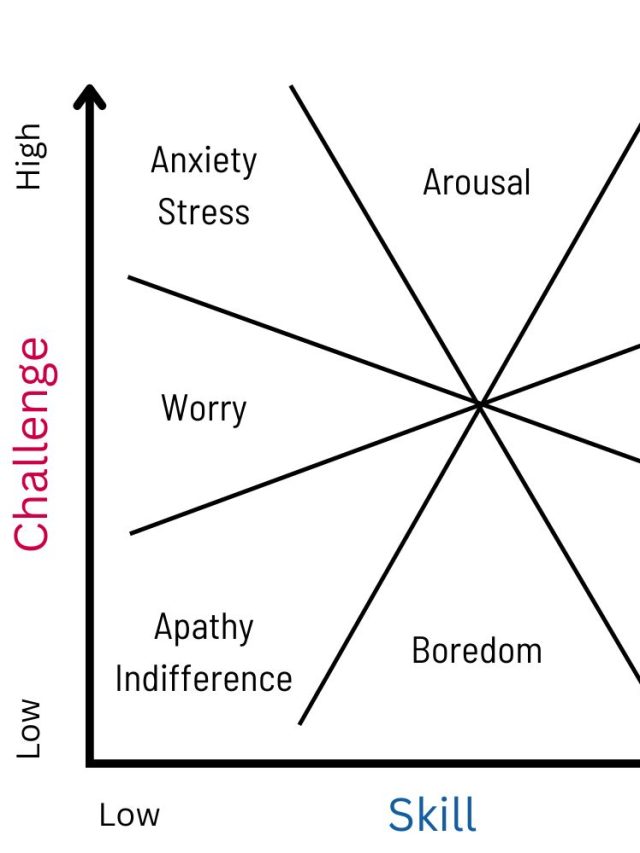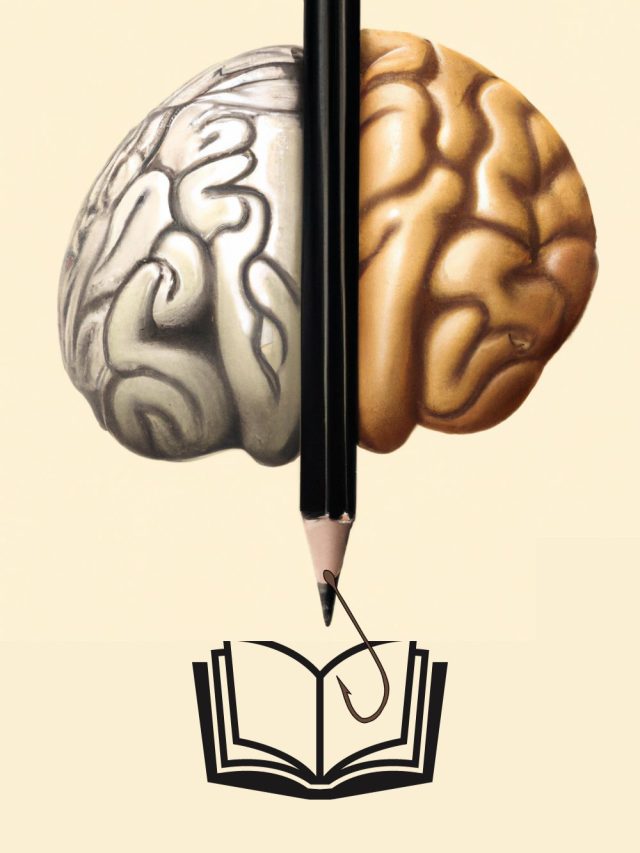I’ll share some specific de-stressing techniques that you can use at work starting today to relax without compromising your work – they will relax you and improve your productivity. Use them for attention fatigue, eye fatigue, muscle tension, mental spiraling, and overall well-being.
Some of these will relax you instantly from your office chair. Some are habits you can develop for your work-life balance. And others will help you decompress after a big project.
These techniques are less about changing thinking (that’s just work, right?) and more about easy behaviors to relax and combat work stress.

- Why should you de-stress when you are overworked?
- 1. Attention-restoring activities for when you are depleted
- 2. The 20/20/20 technique for eye fatigue
- 3. Scroll through fun and cute things that put a smile on your face
- 4. Connect with nature
- 5. Go for walks, or just walk between work tasks
- 6. Progressive muscle relaxation
- 7. Breathing exercises
- 8. The 5-4-3-2-1 grounding technique to reconnect with reality
- Sources
Why should you de-stress when you are overworked?
- De-stressing restores attention which is needed for higher productivity and efficiency. Stress reduces productivity[1]. When you have higher efficiency, you naturally get more free time.
- When stressed, we resort to hasty decision-making and get irrational. We default to automatic thought patterns[2] and old habits (sometimes harmful) instead of using new learning and deliberate thought.
- We make more errors when stressed.
- High chronic stress impairs sleep which worsens everyday functioning and compromises the immune system[3]. That creates secondary problems like more sick leaves, poor performance due to illness, allergies, headaches, presenteeism, and absenteeism.
- High stress makes dealing with emotions and practical difficulties harder.
- A relaxed mind is generally more welcoming of new information, new learning, and positive events. When stressed, it’s harder to focus on positive events, which worsens overall well-being because the mind defaults to negative events/interpretations.
- Destressing periodically can reduce your chances of burning out and speed up recovery from burnout without needing to take long trips or change careers. However, the effect is mild in many cases[4] because the job is too stressful/demanding to let simple relaxation techniques counter burnout.
- High stress prevents[5] sticking to temporary goals and worsens work efficiency.
Easy ways to relax after work stress and restore your mind
1. Attention-restoring activities for when you are depleted
Suppose you can’t just take naps when you want to. What can you do in your breaks to regain focus while relaxing? To restore your attention and focus, your breaks and activities must meet at least 1 of 4 criteria: Fascination, distance, extended engagement, and psychological compatibility.
The attention restoration theory says that we reach an attention fatigue state after stressful work. For an activity to be relaxing after that, your way of engaging your attention must change.
- Fascination is when a person is motivated to engage in something without feeling any effort (looking at a new gadget, gossip, toys)
- Distance is physical and psychological separation from work (leaving the room and staring into the roads, getaways)
- Extended engagement describes breaks/environments that occupy the mind enough to keep it engaged (chess, music)
- Psychological compatibility is a break that aligns with your interests or tendencies (your idea of fun and interesting – hobbies, play)
For most people, a fun, motivating activity away from work is enough to decompress, energize, and restore concentration for later tasks. Any break – be it a hobby, game, outing, trip, pass-time activity, or vacation – will restore your mind if it meets all 4 criteria.
2. The 20/20/20 technique for eye fatigue
The 20/20/20 technique[6] is a simple, cost-effective way to reduce eye fatigue after lots of screen time. For every 20 minutes of screen time, look at something 20 feet away for 20 seconds. Doing so changes the muscle tension in the eye because the eye has to orient toward something very different from the screen. This relaxes the eye.
Looking at something green and natural can reduce eye fatigue even more because natural patterns in the environment are generally more calming and easy to process.
3. Scroll through fun and cute things that put a smile on your face
Even though scrolling is screentime, positive media content like animals, fun reels, and shorts can be quite relaxing and mentally restorative. Research shows[7] using the phone for entertainment is a useful way to recover from work stress. It restores our attention and helps us focus. The kawaii effect occurs here – viewing cute things narrows our focus and makes us careful on immediate tasks.
Positive emotions from engaging content also improve your cognitive state – it broadens memory networks and associates a sense of reward with work. Rest assured, using your phone as a work break is a healthy micro-break.
4. Connect with nature
Sensory contact with nature, animals, and natural patterns can improve your overall well-being, mental health, & productivity, according to many research studies.
Coastlines, parks, trees, birds, dogs, forests, etc., reduce stress and promote mental recovery after heavy cognitive work (like studying, project ideation, vigilance & monitoring, etc.). If possible, take a trip to a nature-rich area after completing a large project.
Within a limited work environment, you can keep potted plants, let air and sunlight in, and sit near a window to wind down for seconds. Petting animals during the day and playing with them also helps.
There are specific mechanisms at play here.
- Plants release Phytoncides, an organic compound, as a defense against herbivores and decay. They permeate the air, and we inhale them. Some are antimicrobial, and some increase the immune response. At least in mice, they are known to reduce the heart’s response to stress as well as reduce anxiety, improve sleep, and relax the nervous system.
- Negative ions in the air are also a major reason why nature makes us feel good. Energetic events like waterfalls, tidal waves, winds, cosmic rays, thunder, etc., produce molecules with an electrical charge. The negatively charged ones, called negative air ions, have a huge effect on our well-being. They:
- improve concentration
- reduce fear & stress
- decrease stuffiness, nausea, dizziness, & headaches
- reduce inflammation
- help to recover from serious mental health disorders.
- We inhale or ingest beneficial microorganisms that affect our immune system and brain function. Like the Mycobacterium vaccae which is found in water, soil, and vegetation. It produces and regulates neurotransmitters like GABA, serotonin, melatonin, and acetylcholine, which reduce anxiety and improve cognitive function.
Connecting with nature is a great way to reduce brain fog too.
5. Go for walks, or just walk between work tasks
Relaxing walks for a few minutes during work breaks and after work is a good way to unwind a stiff body and clear the head. Lunch-time walks, possibly after lunch, are a great way to start a habit of walking. It demonstrably[8] reduces work stress and improves energy and enthusiasm. Short walks in urban greenery[9] work just as well too.
General movement during work[10] is important too. Moving between desks, walking around the house, taking the stairs, etc., keeps the body engaged and prevents lethargy – which feels like fatigue.
6. Progressive muscle relaxation
Progressive muscle relaxation[11] systematically destresses the whole body – improves sleep[12], lowers blood pressure[13] in high BP people (within 2 days[14]), and reduces stress/anxiety/tension[15]. It works on the principle that a tense body and a tense mind are incompatible with each other. So a tense body creates a tense mind, and a tense mind creates a tense body. Effectively, if you forcibly relax your body, the mind relaxes. And since it’s easier to control the body than thoughts, a systematic relaxation technique is the go-to method recommended by many mental health practitioners. PMR is effective in reducing mental stress, physical tension, and anxiety. It creates an overall level of relaxation.
Create 8 main muscle groups: (1) hands and forearms; (2) upper arms; (3) forehead and eyebrows; (4) jaw, chin, and front of neck; (5) back of neck and ears; (6) upper body; (7) thighs; (8) shin and feet
Here’s how to do progressive muscle relaxation
- Sit in a comfortable chair or lie down on your bed.
- Slowly breathe in and breathe out 5 times.
- Choose a muscle group like your hands and forearms. Let them rest loosely.
- While breathing in, begin tensing the muscle group up as much as you can till you feel you are tightened up.
- While breathing out, release the tension slowly and steadily.
- Breathe in and breathe out while tensing and releasing 5 times. Inhalation and exhalation should last about 5 seconds each.
- Visualize and acknowledge the feeling of muscles releasing all the tension and relaxing
When relaxing your hands and feet, ensure you fully flex and open them up, and then close them. For hands, stretch your fingers out upward and then relax them. For feet, raise them at the ankle with toes pointing up once and repeat the routine with toes pointing down and foot arching. Stay hydrated and start slow so you don’t cramp.
One major advantage of progressive muscle relaxation is that you can do this in your chair between 2 work tasks with instant relaxation.
If progressive muscle relaxation is too hard to follow, you can begin with basic stretching exercises. They also follow the same principle – forcibly release tension from muscles to ease your mind.
7. Breathing exercises
There are many forms of breathing exercises that can help you relax. Most variations work and don’t require any training. Here are 2 very easy methods.
Deep breathing
Deep breathing is the easiest, most economical way[16] of countering stress, anxiety, negative emotions, and tension. Deep breathing is essentially purposeful long inhales and exhales, and that’s often enough. There are some variations you can use:
- 4-7-8 breathing: Inhale for 4 seconds, hold your breath for 7 seconds, and exhale for 8 seconds. You can do an easier version of this with only 4 seconds for all 3 parts.
- Equal Ratio breathing: Controlled breathing with exhales as long as inhales. 3 seconds inhale and 3 seconds exhale is a common practice.
- Belly breathing (diaphragmatic breathing): Using the diaphragm to inhale more than usual. Place your left hand on the chest and your right hand on the stomach. While inhaling, try to keep your left hand still, ensuring you don’t puff up your lungs. Try to get your inhales to your diaphragm, so your right hand is pushed outward. While exhaling, let your right hand on the belly sink back to its original position and keep your left hand steady. Remember to breathe slowly through your nose during inhalation and exhalation.
Cupped hands breathing
Cupped hand breathing is breathing with hands covering the mouth and nose. By doing so, you inhale extra CO2 trapped in the hand “cup,” which you exhaled from the previous breath. This restores the balance of oxygen and carbon dioxide. When stressed[17], you may hyperventilate and breathe shallowly. This reduces the CO2 in the body, which increases muscle tension and fatigue and impairs cognitive function. By re-breathing CO2 trapped in the cupped hands, you restore the oxygen balance in the body. Here’s how to do it:
- Place your hands over your mouth covering your nose
- Breathe deeply in and out 5-10 times
- Remove hands and continue breathing normally
You should do this only when you hyperventilate or have a panic attack due to work stress.
8. The 5-4-3-2-1 grounding technique to reconnect with reality
The 5-4-3-2-1 technique is a sensory grounding technique that helps you reconnect with reality and stabilize when you are spiraling or having an anxiety attack. The technique works by systematically bringing your attention to your senses which ground you into the external reality instead of your internal, mental reality. This is ideal when your stress spikes due to a new announcement, uncertainty at work, or critical feedback.
Here’s how you do it:
- Notice 5 things you can see
- Notice 4 things you can hear
- Notice 3 things you can touch
- Notice 2 things you can smell
- Notice 1 thing you can taste
The second step is actively interacting instead of just noticing. So,
- Look at 5 things and observe them
- Listen to 4 sounds in your environment
- Touch 3 different textures
- Smell 2 pleasant things
- Taste 1 thing: eat, drink water, chew gum, etc.
To help, you can use essential oils, scents, a meal, and music to facilitate this grounding in a pleasing way.
Sources
[2]: https://www.nature.com/articles/npjscilearn201611
[3]: https://link.springer.com/article/10.1007/s11357-014-9631-6
[4]: https://bpspsychub.onlinelibrary.wiley.com/doi/abs/10.1111/joop.12099
[5]: https://link.springer.com/article/10.1007/s00221-011-2943-1
[6]: https://journals.sagepub.com/doi/full/10.1177/1120672118815110
[7]: https://www.tandfonline.com/doi/abs/10.1080/15213269.2011.573466
[8]: https://onlinelibrary.wiley.com/doi/abs/10.1111/sms.12398
[9]: https://www.mdpi.com/1999-4907/11/5/591
[10]: https://journals.sagepub.com/doi/full/10.1177/147470491201000502
[11]: https://www.tandfonline.com/doi/abs/10.1300/J137v13n03_04
[12]: https://www.researchgate.net/profile/Viorel-Lupu/publication/286004425_Treating_primary_insomnia_A_comparative_study_of_self-help_methods_and_progressive_muscle_relaxation/links/5720716308aed056fa236a06/Treating-primary-insomnia-A-comparative-study-of-self-help-methods-and-progressive-muscle-relaxation.pdf
[13]: https://www.sciencedirect.com/science/article/abs/pii/0005796775900492
[14]: https://www.proquest.com/openview/b4ab8df018e8aecb5b4323ba37342c9d/1?pq-origsite=gscholar&cbl=2028906
[15]: https://psycnet.apa.org/record/1994-26843-001
[16]: https://link.springer.com/article/10.1007/s10484-015-9279-8
[17]: https://onlinelibrary.wiley.com/doi/abs/10.1002/ajim.10061

Hey! Thank you for reading; hope you enjoyed the article. I run Cognition Today to paint a holistic picture of psychology. My content here is referenced and featured in NY Times, Forbes, CNET, Entrepreneur, Lifehacker, about 15 books, academic courses, and 100s of research papers.
I’m a full-time psychology SME consultant and I work part-time with Myelin, an EdTech company. I’m also currently an overtime impostor in the AI industry. I’m attempting (mostly failing) to solve AI’s contextual awareness problem from the cognitive perspective.
I’ve studied at NIMHANS Bangalore (positive psychology), Savitribai Phule Pune University (clinical psychology), Fergusson College (BA psych), and affiliated with IIM Ahmedabad (marketing psychology).
I’m based in Pune, India. Love Sci-fi, horror media; Love rock, metal, synthwave, and K-pop music; can’t whistle; can play 2 guitars at a time.










